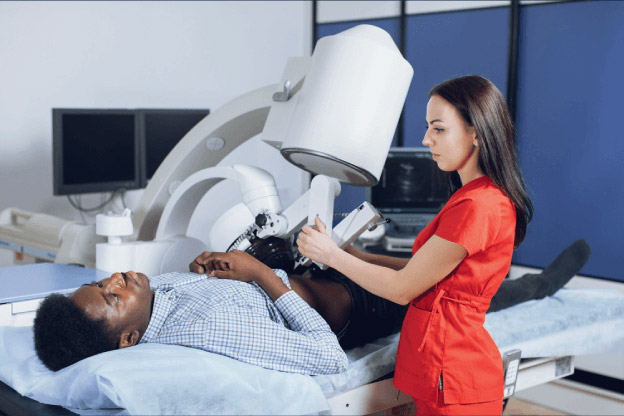


Fluoroscopy is a type of imaging technique that employs numerous pulses of X-rays to procure a real-time image of the esophagus, stomach, and small intestine. Also, Upper gastrointestinal tract radiography or upper GI is a type of moving x-ray to check the function of the organ inside the body to either treat the illness or diagnose the problem.
This method is safe and non-invasive; the results from the procedure are commonly used to diagnose acid reflux, pain, a cancerous growth, and other symptoms. In addition to this, the procedure may take 45-60 minutes and generally, imaging technicians perform it.

There are many reasons why someone needs fluoroscopy:
Upper Gastrointestinal Tract (GI) radiography – Creates images using the barium-based contrast material to produce images of the stomach, esophagus, and small intestine to determine any foreign bodies in the guts and ulcers.
Lower GI radiography – Also referred to as barium enema is used to procure images of the large intestine’s inner lining to discover cancerous growth, ulcerations, and foreign bodies inside the body.
Hysterosalpingography (HSG) – This technique is used to examine the fallopian tube and uterus of a woman facing difficulty in conceiving. Additionally, it is also used to check miscarriages due to abnormalities in the uterus. Plus it is also used to identify the uterus fibroids tumor masses and uterine fibroids.
Ontario Diagnostic Centers (ODC) is committed to supporting you with accurate results so you can focus on a healthier future! We are a full-service advanced diagnostic centre for all your precise diagnostic needs.